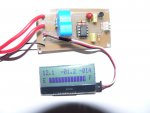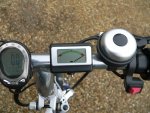Blazemaguire
Senior Member
Hi,
At my school we're entering our 2nd year of the 'green power electric car' race series.
We'd like to get even more efficient this year and start to measure the current draw of our car, ideally logging it while testing different gear ratios and bodywork designs.
I know you can do data logging with a PIC fairly easily, but how easy would it be to measure and log current draw (at a hefty 20 - 40 amps DC)? - The ideal current draw for the motor we have to use in the race is around 24Amps continuous (as in 24A allows you to 'just finish' but do the highest speed and therefore most laps in a 4 hour endurance race) - The current can climb a lot higher during initial acceleration until the motor is up to its most efficient RPM (I know this from research of other teams not our car!).
Am i flogging a dead horse trying to do this with a PIC? - Should I just invest in a nice digital ammeter off ebay with a shunt? (going to cost about £25+ the long delay for it to arrive from China)
If it's possible, I think it would be a nice project for our greenpower students to do, and if they cannot find time one of my A-level systems and control students could pick it up as an A2 project idea
Unfortunatly I do not know how you would safely interface and measure the current with a PIC being that you have to measure current in series? (unless using hall effect method I gather?)
Any ideas from you fine chaps?
Rob
At my school we're entering our 2nd year of the 'green power electric car' race series.
We'd like to get even more efficient this year and start to measure the current draw of our car, ideally logging it while testing different gear ratios and bodywork designs.
I know you can do data logging with a PIC fairly easily, but how easy would it be to measure and log current draw (at a hefty 20 - 40 amps DC)? - The ideal current draw for the motor we have to use in the race is around 24Amps continuous (as in 24A allows you to 'just finish' but do the highest speed and therefore most laps in a 4 hour endurance race) - The current can climb a lot higher during initial acceleration until the motor is up to its most efficient RPM (I know this from research of other teams not our car!).
Am i flogging a dead horse trying to do this with a PIC? - Should I just invest in a nice digital ammeter off ebay with a shunt? (going to cost about £25+ the long delay for it to arrive from China)
If it's possible, I think it would be a nice project for our greenpower students to do, and if they cannot find time one of my A-level systems and control students could pick it up as an A2 project idea
Unfortunatly I do not know how you would safely interface and measure the current with a PIC being that you have to measure current in series? (unless using hall effect method I gather?)
Any ideas from you fine chaps?
Rob


